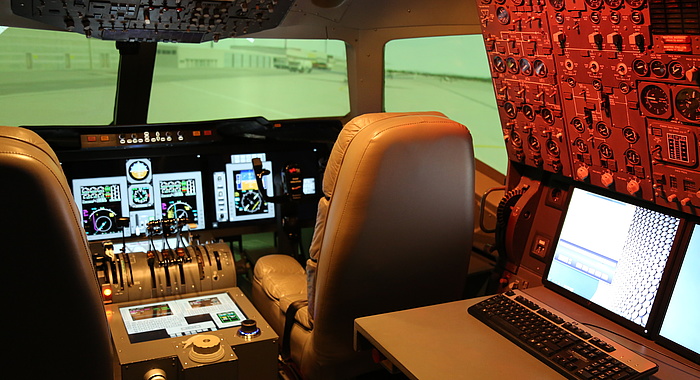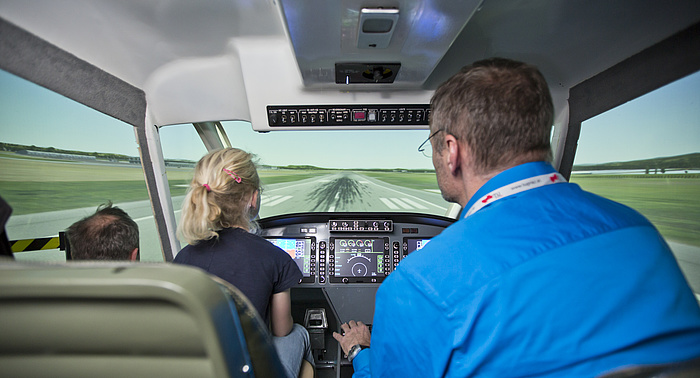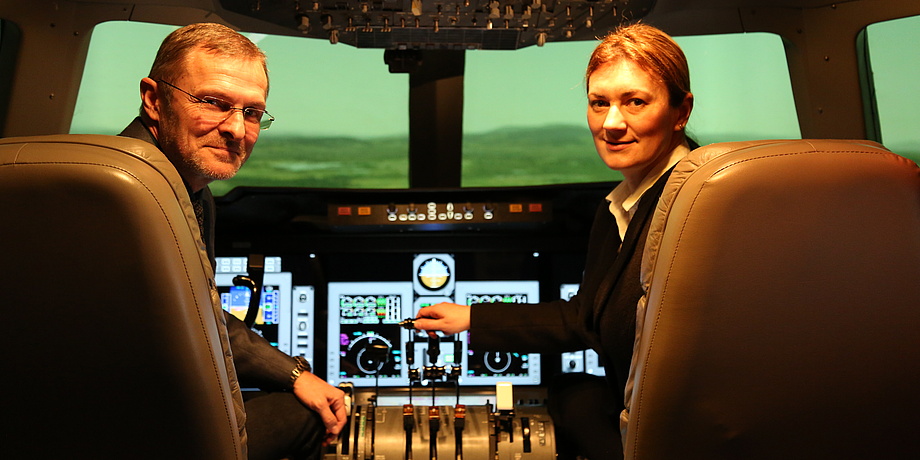The fleet of TU Graz comprises a simulator for wide-bodied aircraft and a simulator for light aircraft, and both facilitate a close-to-real flight training owing to the latest technology available. A wide-angle vision system projects virtual flight scenarios directly onto a curved screen right in front of the cockpit while mechanical control elements simulate a realistic application of force, and the sound system emulates detailed real-life sounds inside the cockpit. Here is the video, with Reinhard Braunstingl introducing the wide-body aircraft simulator.


Simulation training right from the first flight lesson
“The current training programme for would-be pilots of light aircraft does not aim at preparing them for specific traffic situations. Rather, the traffic rules are learned in theory, but are not trained for systematically,” explains the human factors expert, Ioana Koglbauer, from the Institute of Mechanical Engineering at TU Graz. In the course of the FFG Project ELFlight, the researchers at TU Graz have explored, among other things, the collision avoidance behaviour of flight trainees in uncontrolled airspace. This was done in the context of providing them with specific simulated scenarios of complex traffic situations with radio communication for training purposes. And the results? At first, the trainees mostly did not manage the situation adequately because they were not in a position to assess the situation appropriately. Having undergone additional training using the flight simulator, their capacity to grasp the training situation accordingly could be largely improved for implementation in real life scenarios.The initial results of the ELFlight Project, which designed anew and explored the effectiveness of teaching methods and tools for improved flight training of future pilots, have been published in “Procedia Social and Behavioral Sciences” (1,2)and in “Cognition, Brain, Behavior”.
The “Human Factor” in new cockpit systems and displays
A further interdisciplinary research focus with the flight simulator as the main protagonist has been the development of new cockpit systems whose technologies are safe, efficient and easy to handle for pilots. “Today, when working on design concepts for new cockpit systems and displays, the aircraft manufacturers use virtual cockpits to start with, or they use hardware simulators in combination with virtual reality simulators. Through this approach, the user-friendliness of operating components and elements can be tested from an early stage on. This, in turn, allows for a significant reduction in development costs,” says Reinhard Braunstingl. As far as displays are concerned, a novel, “smart” collision warning system for visual flight was developed in the context of a doctoral thesis at the Institute of Mechanical Engineering at TU Graz.During the Long Night of Research, often at least one of the flight simulators can be used by visitors!

